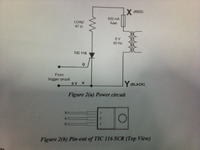mystic07
Junior Member level 2
load in series with SCR(thyristor)
Why should a load always be connected to the anode side of the SCR???
the diagram is as follows:

the voltage across the load was measured with a CRO.
what would happen if the load's position was exchanged with that of th SCR?
i,ve search the web but cannot find the answer. could anyone please help? thanks
(any relevant link would be really helpful, if possible)
Why should a load always be connected to the anode side of the SCR???
the diagram is as follows:

the voltage across the load was measured with a CRO.
what would happen if the load's position was exchanged with that of th SCR?
i,ve search the web but cannot find the answer. could anyone please help? thanks
(any relevant link would be really helpful, if possible)
Last edited: